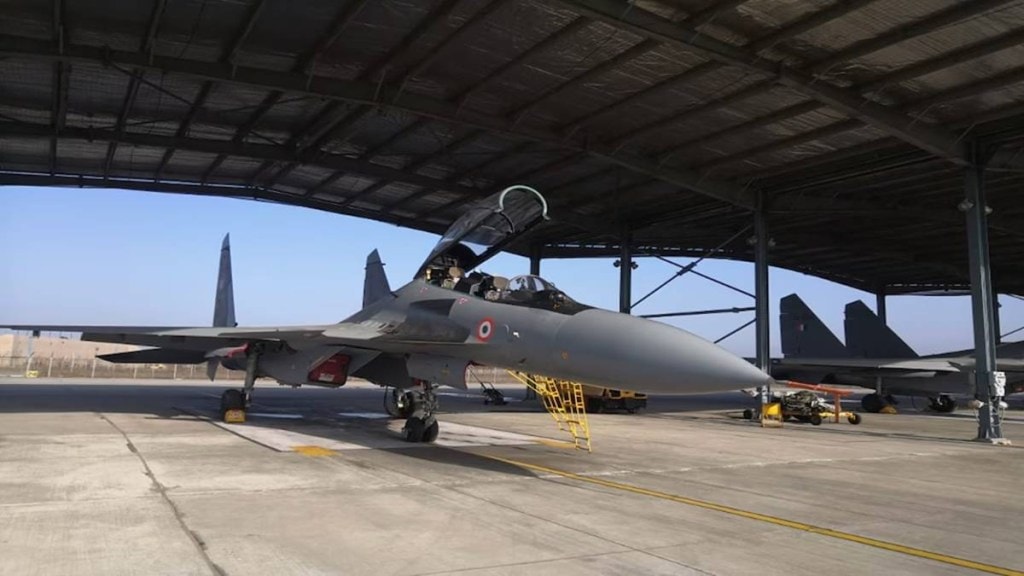India is on the verge of securing a landmark defence deal with France for the purchase of 26 Rafale Marine (Rafale M) jets, expected to strengthen the Indian Navy’s maritime strike capability. French defence company Dassault has submitted a comprehensive bid to the Indian government, paving the way for the deal’s potential finalization. This purchase is seen as a critical step in enhancing the operational capabilities of India’s new aircraft carrier, INS Vikrant, which was commissioned in September 2022.
Strategic Discussions in Paris
National Security Adviser (NSA) Ajit Doval who is heading to Paris is scheduled to discuss the Rafale M deal during his visit to Paris for the Indo-France Strategic Dialogue. Talks between Doval and his French counterpart are likely to focus on finalizing the contract terms. The discussions are expected to build on earlier negotiations held in May, when a high-level French delegation visited New Delhi and engaged with India’s Cost Negotiation Committee (CNC) of the Ministry of Defence.
During these talks, the parties discussed various aspects of the deal, including pricing, technology, and weapon systems. According to defence sources, executives from Dassault and Thales, the French company responsible for the jet’s weapon systems, were present to address the specific requirements of the Indian Navy.
Rafale M Deal: A Key to Strengthening Naval Power
The Indian Navy currently faces a shortage of modern fighter jets to operate from its aircraft carriers, notably the INS Vikrant. While the Navy has been using Russian-made MiG-29K jets, these aircraft are becoming outdated. The acquisition of 26 Rafale M jets, which includes 22 single-seater fighters and four twin-seaters for training, aims to address this gap.
Defence officials believe the Rafale M jets will provide the Navy with enhanced maritime strike capabilities, thanks to their advanced avionics and weaponry. The deal is valued at approximately €5.5 billion (around Rs 50,000 crore). Notably, the Rafale M jets are expected to incorporate a range of indigenous technologies, including the Uttam radar and Astra beyond visual range missiles, demonstrating India’s focus on self-reliance in defence.
NSA Ajit Doval’s visit to Paris this week is seen as pivotal in wrapping up the final details of the deal, particularly concerning weapon systems, pricing, and technological integration. Reports indicate that France has offered a significant price reduction following tough negotiations with India, setting the stage for a mutually beneficial agreement.
Delivery Timeline and Strategic Importance
Despite progress, the Rafale M jets are not expected to enter service immediately. If the deal is signed in the coming months, the first batch of jets would be delivered around 2027, following the pattern of the previous Rafale deal for the Indian Air Force. In that case, India placed an order for 36 Rafale fighter jets in 2015, with the first delivery occurring four years later, in 2019.
The Indian Navy’s need for these jets is urgent, especially as the INS Vikrant is already operational. The Navy currently has 45 MiG-29K fighter jets, but they are increasingly seen as insufficient for modern maritime warfare. As a stopgap measure, the Navy is relying on these MiG-29Ks, originally intended for deployment on INS Vikramaditya, another aircraft carrier.
Indigenous Alternatives and Future Plans
While Hindustan Aeronautics Limited (HAL) has developed the LCA-Tejas Naval version in collaboration with DRDO, the Indian Navy remains cautious about deploying it on aircraft carriers due to its single-engine design. However, HAL has already begun work on a deck-based Twin Engine Fighter Jet (TEDBF), expected to be ready by 2026, with production slated for 2030. The TEDBF is anticipated to be a crucial part of India’s future maritime combat fleet, with plans to acquire 45 units by 2040.
The Rafale M deal is expected to bridge the gap in India’s naval aviation capabilities until the TEDBF becomes operational. Additionally, this deal includes integration of advanced weapons systems such as the Meteor long-range air-to-air missiles and anti-ship weaponry, further enhancing India’s defence capabilities.
